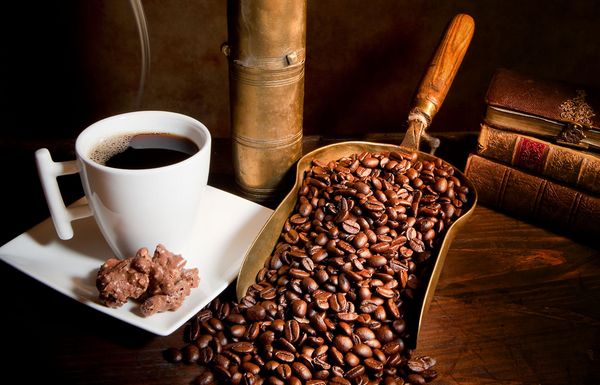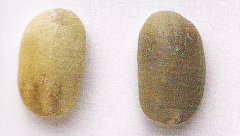The six steps of coffee tasting: aroma, aroma, taste, smell, aftertaste and mellowness
Coffee tasting has six steps, describing coffee aroma, aroma, taste, smell, aftertaste and alcohol.
1. Fragrance: The first step in tasting is to evaluate the aroma of coffee beans. Grind 8.25 grams of coffee, place it in 3 to 5 sample cups, and then inhale vigorously the gases released by the freshly ground coffee cells.
Aroma characteristics indicate the flavor nature of the coffee bean: a sweet smell indicates that its taste is sour; a pungent smell indicates that its taste is pungent. The strength of the aroma indicates the freshness of the coffee, i.e. the time the beans have been standing between roasting and grinding.
Aroma consists of the most volatile aromatic compounds, especially those containing sulfur, such as methyl mercaptan. How to retain these substances in coffee beans, people can currently do very little.
2. Aroma: The second step in tasting is to check the aroma of the coffee water. First, pour 150 ml of boiling fresh (oxidized) water into the freshly ground coffee powder and let the coffee powder soak in the water for 3 to 5 minutes. Coffee powder forms a cap-like shell on top of water.
Stir the coffee vigorously with a coffee spoon, crushing the cap-shaped crust. At this time, the coffee powder due to the hot water released by the gas forced inhalation nasal cavity, so that the nasal diaphragm to feel the full range of aroma: from fruit, grass, to nut flavor. The tasting experience causes the tasters to classify coffee according to their memories of various coffee odors. In the future, different kinds of coffee can be distinguished according to their smell.
Generally speaking, the aroma characteristics of coffee are related to the origin of coffee. Correspondingly, the intensity of aroma is related to the freshness of coffee. Freshness is measured by the length of time from baking to cooking. Freshness is also affected by the type of packaging that protects coffee from moisture and oxidation.

3. Taste: Carefully tasting the taste of freshly brewed coffee is the third step in coffee tasting. Use a special coffee spoon, usually a round spoon with a capacity of 8 to 10cc. Preferably silver-plated, which dissipates heat quickly. Put 6 to 8cc of coffee water in front of your mouth and sip it. Inhale coffee quickly and distribute it evenly on the surface of the tongue. All sensory nerve endings respond simultaneously to sweet, salty, sour and bitter.
Since temperature affects the degree of stimulation, noting the responses of different sensitive areas of the tongue can help to capture different features. For example, because temperature reduces sensitivity to the sweetness of sugar, acidic coffee initially produces a sting on the tongue rather than a sweetness. Hold coffee in your mouth for 3 to 5 seconds, focusing on the type and intensity of taste. In this way, primary and secondary taste characteristics can be evaluated.
4. Nose: Step 4 is simultaneous with Step 3. Inhale coffee through the surface of the tongue. Because of the change of vapor pressure, some organic matter in water changes from liquid to gas. The act of inhaling coffee draws gas into the nasal passages, allowing tasters to analyze the coffee's smell.
The taste and smell of coffee are evaluated simultaneously so that the connoisseur feels the unique flavor characteristics of coffee. Standard roast coffee usually has the flavor of caramelized products, while deep roast coffee usually has the flavor of retort products.
Aftertaste: The fifth step is to hold the coffee water in your mouth for a few seconds and then swallow a small portion. A quick throat-suck sends the moisture left behind into the nasal cavity, where heavier molecular odors can be detected.
The aromas of the various compounds perceived in the aftertaste phase are sweet, chocolate-like; campfire smoke, or cigar smoke; sometimes pungent spices, such as clove; sometimes resinous, turpentine; and sometimes a combination of these.
6. Body: The final stage of the tasting is to evaluate the taste of the coffee water. Gently slide your tongue over the palate of your mouth to feel the texture of the coffee. The feeling of oil and smoothness can measure the fat content of coffee water, while the feeling of "heavy", thick and sticky coffee can measure the fiber and protein content of coffee. Both of them make up the alcohol of coffee.
Important Notice :
前街咖啡 FrontStreet Coffee has moved to new addredd:
FrontStreet Coffee Address: 315,Donghua East Road,GuangZhou
Tel:020 38364473
- Prev

Learn how to taste coffee preparation and steps
Simply put, learning to taste coffee requires the following preparations: 1. Understanding coffee culture, such as the origin of coffee, the background of coffee, and the etiquette of drinking coffee; 2. Understanding coffee details, such as why Blue Mountain Coffee is called Blue Mountain, why it is the best; why mocha is called coffee (Queen's meaning), and when a cup of coffee should be drunk, Kabuki
- Next

Selection methods and matters needing attention of raw coffee beans
The taste of raw beans and fruits before selection will not vary according to their size. What about coffee beans? Coffee beans harvested from the same tree, regardless of size
Related
- Detailed explanation of Jadeite planting Land in Panamanian Jadeite Manor introduction to the grading system of Jadeite competitive bidding, Red bid, Green bid and Rose Summer
- Story of Coffee planting in Brenka region of Costa Rica Stonehenge Manor anaerobic heavy honey treatment of flavor mouth
- What's on the barrel of Blue Mountain Coffee beans?
- Can American coffee also pull flowers? How to use hot American style to pull out a good-looking pattern?
- Can you make a cold extract with coffee beans? What is the right proportion for cold-extracted coffee formula?
- Indonesian PWN Gold Mandrine Coffee Origin Features Flavor How to Chong? Mandolin coffee is American.
- A brief introduction to the flavor characteristics of Brazilian yellow bourbon coffee beans
- What is the effect of different water quality on the flavor of cold-extracted coffee? What kind of water is best for brewing coffee?
- Why do you think of Rose Summer whenever you mention Panamanian coffee?
- Introduction to the characteristics of authentic blue mountain coffee bean producing areas? What is the CIB Coffee Authority in Jamaica?

